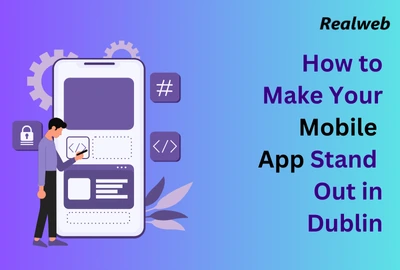Creating a successful mobile app requires careful planning, strategic thinking, and a deep understanding of both user needs and market trends. With millions of apps available on platforms like Google Play and the Apple App Store, competition is fierce, and users have high expectations. To stand out, your app must offer a unique value proposition, function smoothly, and provide an exceptional user experience. This article outlines the key considerations to help you develop a mobile app that not only meets but exceeds these expectations.
Table of Contents
Toggle1. Define Your App’s Purpose and Target Audience
Before starting the development process, it’s crucial to clearly define the purpose of your app. What problem does it solve? What value does it provide to users? Understanding your app’s core purpose will guide every decision you make during development.
Equally important is identifying your target audience. Who are your ideal users? What are their needs, preferences, and pain points? Conduct market research to gather insights about your target demographic. Understanding your audience helps in designing features and functionalities that resonate with them, increasing the likelihood of your app’s success.
2. Choose the Right Platform
Deciding whether to develop your app for Android, iOS, or both is a key consideration. Each platform has its advantages and limitations. Android offers a larger global user base, while iOS users tend to spend more on apps and in-app purchases. Your choice should align with your target audience’s preferences and behavior.
Additionally, consider whether to build a native app, which is designed for a specific platform, or a cross-platform app, which works on multiple platforms. Native apps typically offer better performance and a more polished user experience, but cross-platform apps can be more cost-effective and faster to develop.
3. Prioritize User Experience (UX)
User experience is a critical factor in the success of your mobile app. A well-designed app should be intuitive, easy to navigate, and visually appealing. Users should be able to accomplish their goals with minimal effort and frustration.
To enhance UX, focus on the following aspects:
- Simplicity: Keep the user interface (UI) clean and uncluttered. Avoid overwhelming users with too many options or complex features.
- Consistency: Maintain consistency in design elements, such as buttons, fonts, and colors, throughout the app. This creates a cohesive and professional look.
- Feedback: Provide users with clear feedback when they interact with the app, such as loading indicators or confirmation messages. This helps users understand the app’s response to their actions.
- Accessibility: Ensure your app is accessible to all users, including those with disabilities. Consider features like voice commands, larger text options, and color contrast adjustments.
4. Plan Your App’s Features and Functionality
Determining the right features and functionality for your app is a balancing act. You want to offer enough value to users without overcomplicating the app. Start with a minimum viable product (MVP) that includes only the essential features. This allows you to test your app with real users and gather feedback before adding more advanced features.
When planning features, consider the following:
- Core Functionality: Identify the key features that are central to your app’s purpose. These should be prioritized during development.
- User Flow: Map out the user journey from start to finish. Ensure that the flow is logical and that users can easily navigate between different sections of the app.
- Scalability: Plan for future growth by designing your app’s architecture to accommodate additional features and an increasing number of users.
5. Focus on Performance and Security
Performance is a critical factor in user satisfaction. A slow or buggy app can lead to high uninstall rates and negative reviews. To ensure your app performs well:
- Optimize Loading Times: Minimize the time it takes for your app to load. This can be achieved by optimizing images, reducing the number of API calls, and using efficient coding practices.
- Test Across Devices: Test your app on a variety of devices with different screen sizes, operating systems, and hardware specifications. This helps identify and fix performance issues before launch.
- Monitor App Performance: Use analytics tools to monitor your app’s performance in real time. Track metrics like load times, crash rates, and user engagement to identify areas for improvement.
Security is equally important, especially if your app handles sensitive user data. Implement security measures such as data encryption, secure authentication methods, and regular security updates. Protecting user data not only builds trust but also helps you comply with legal regulations.
6. Create a Monetization Strategy
If you plan to generate revenue from your app, you need a clear monetization strategy. There are several monetization models to choose from:
- Paid Apps: Users pay a one-time fee to download your app. This model works best for apps that offer unique value and are not easily replaceable.
- In-App Purchases: Offer additional features, content, or virtual goods within the app. This model is popular in gaming apps and apps with premium content.
- Subscription Model: Charge users a recurring fee to access premium features or content. This model works well for apps that provide ongoing value, such as fitness or productivity apps.
- Advertising: Display ads within your app to generate revenue. Be mindful of the user experience, as too many ads can frustrate users and lead to uninstalls.
7. Plan for Regular Updates and Maintenance
The work doesn’t end once your app is launched. Regular updates and maintenance are essential to keep your app relevant and functional. This includes fixing bugs, adding new features, and adapting to changes in operating systems or user behavior.
Gather feedback from users to identify areas for improvement. Stay informed about industry trends and technological advancements that could enhance your app. Regular updates not only improve the user experience but also keep your app competitive in a rapidly changing market.
8. Develop a Marketing and Launch Strategy
A well-executed marketing strategy is crucial to your app’s success. Start by building anticipation before launch with teaser campaigns, social media promotions, and press releases. Create a landing page for your app that highlights its key features and benefits.
Upon launch, leverage app store optimization (ASO) to increase your app’s visibility in the app stores. Use targeted advertising, influencer partnerships, and email marketing to reach your target audience. Encourage satisfied users to leave positive reviews, as this can significantly impact your app’s rankings and download rates.
Conclusion
Creating a successful mobile app development dublin requires a combination of strategic planning, user-centric design, and continuous improvement. By focusing on your app’s purpose, audience, UX, performance, and security, you can develop an app that stands out in the crowded marketplace. Regular updates and a solid marketing strategy will help you maintain your app’s relevance and drive long-term success. With careful consideration of these key factors, your mobile app has the potential to become a valuable asset for both your business and its users.







